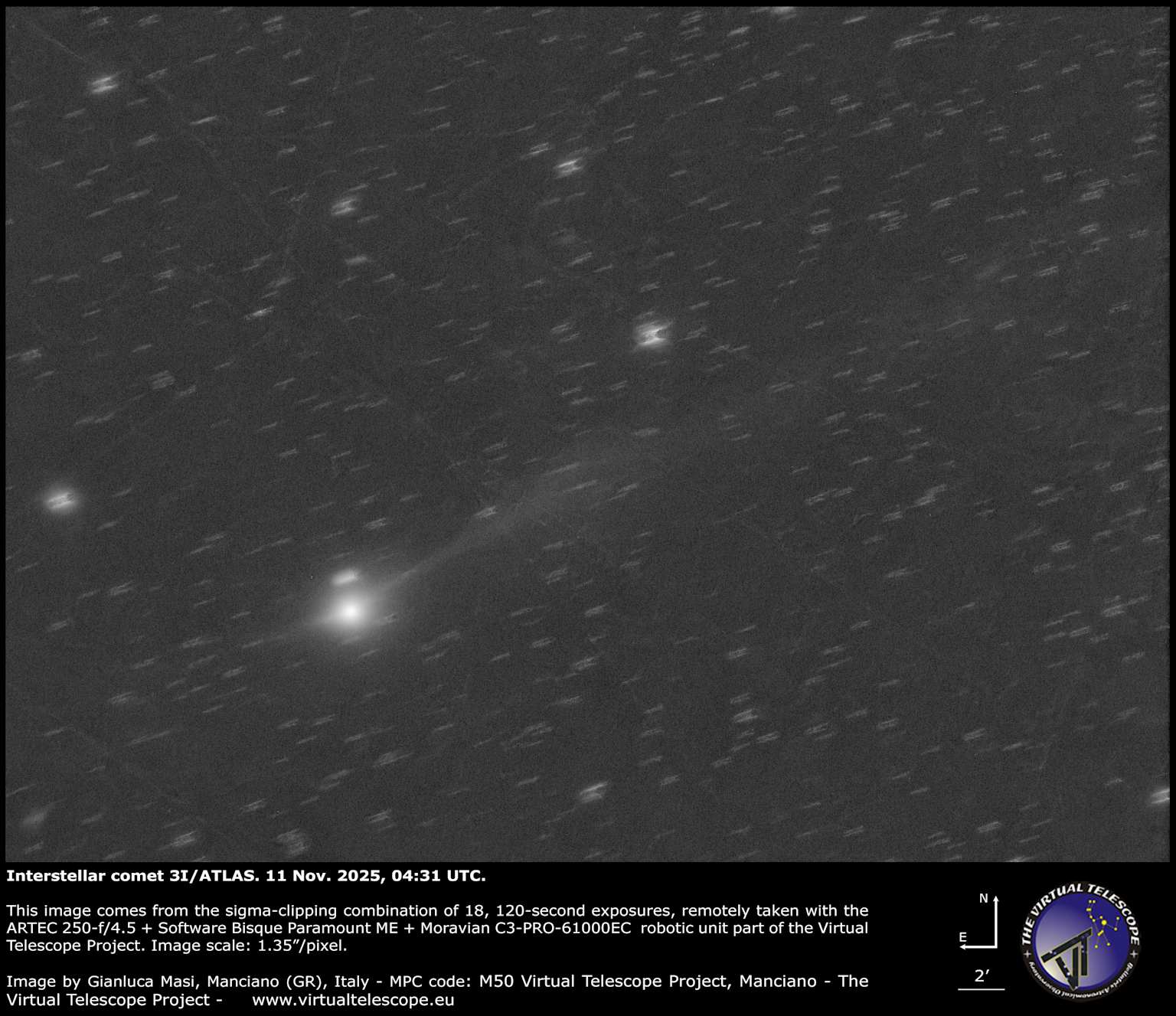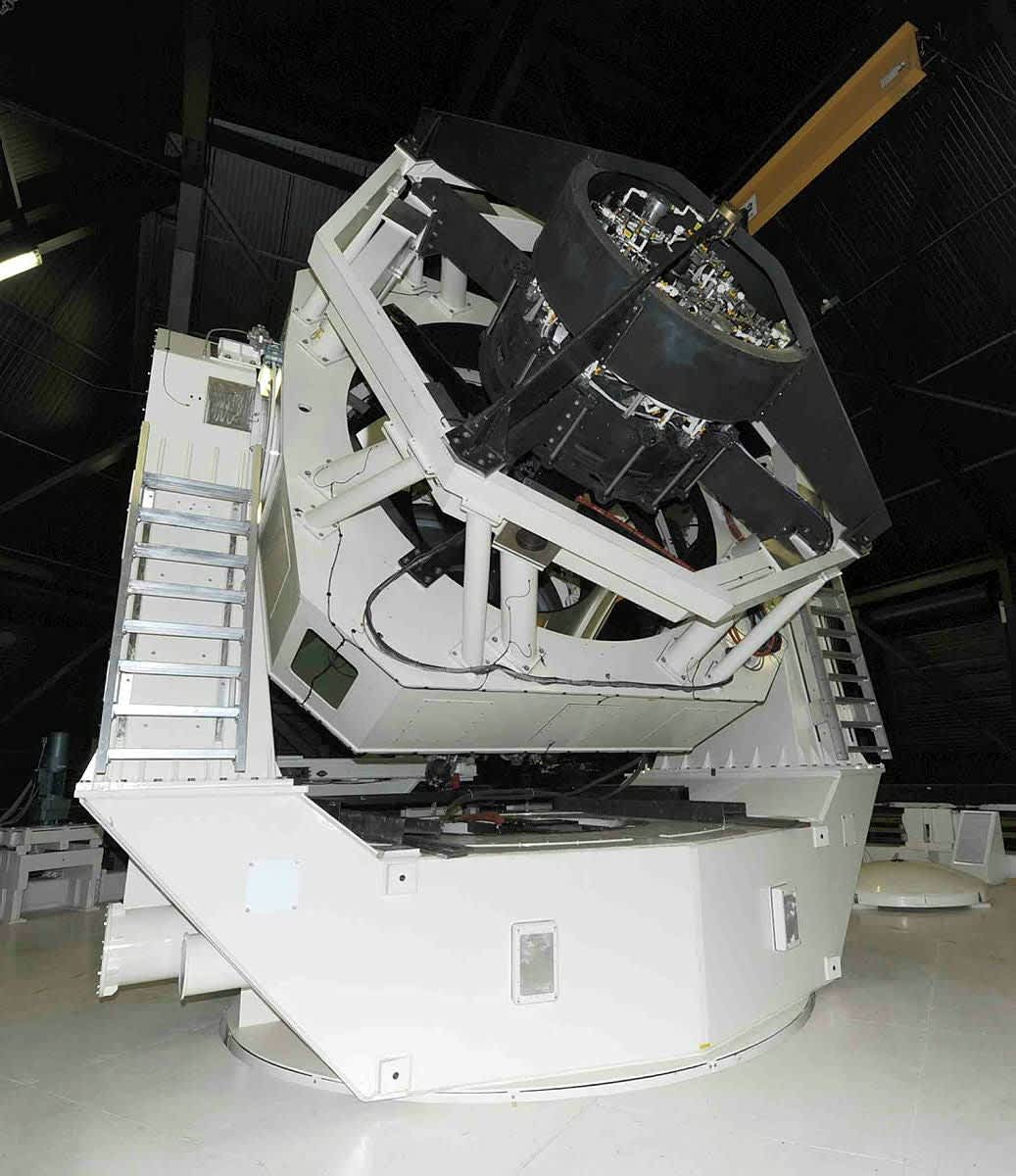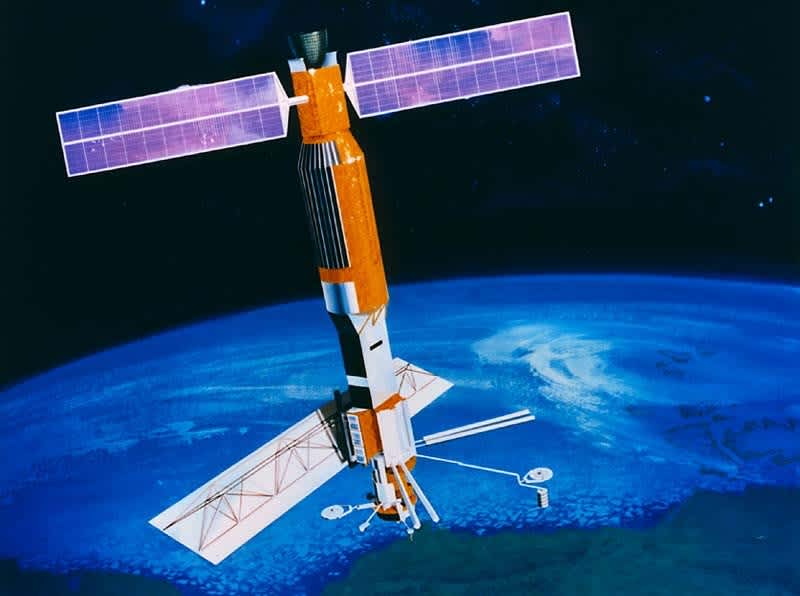Decoding the UMBRA-3/IC Signature
Evidence for Authentic Military-Grade Space Surveillance of Interstellar Comet 3I/ATLAS
Based on Technical Naming Convention Analysis

Astronomical observation tracking interstellar comet 3I/ATLAS passing near the sun in October 2025
Introduction
In July 2025, astronomers discovered 3I/ATLAS (designated C/2025 N1), the third confirmed interstellar object to visit our solar system. Unlike its predecessors—1I/'Oumuamua and 2I/Borisov—this interstellar comet provided unprecedented opportunities for extended observation as it approached and passed behind the Sun.
A mysterious video purportedly showing this object bears an unusual naming convention: C/2025 N1 UMBRA-3/IC with a secondary stamp reading CASSANDRA/ORACLE VI I ARGUS-VIS I.
This analysis examines whether these naming conventions represent authentic metadata from a classified space surveillance system, or merely an elaborate fabrication. The technical precision and internal consistency of these identifiers provide compelling forensic evidence.

3I/ATLAS observed on 11 November 2025 displaying its bright nucleus and extended tail
Executive Summary
Key Finding
The naming convention represents an unmistakable signature of successful military-grade XGEO surveillance—not a random string, but a technically precise internal identifier that:
- Certifies a real object (C/2025 N1) was acquired under challenging conditions (UMBRA)
- Documents successful on-board processing (3/IC) for immediate intelligence consumption
- Confirms data readiness for high-throughput databases (CASSANDRA/ORACLE)
- Demonstrates multiple converging lines of technical evidence supporting authenticity
C/2025 N1 UMBRA-3/IC
CASSANDRA/ORACLE VI I ARGUS-VIS I
The Observation Stamp: C/2025 N1 UMBRA-3/IC
The primary identifier breaks down into four technically precise components, each carrying specific operational meaning:
C/2025 N1 — Target Identity
Designation: International Astronomical Union (IAU) official designation
Meaning: Comet discovered in 2025, first half of July (period N), object 1
Validation: 100% verified in Minor Planet Center database
Significance: Establishes foundation of reality—this is not a fictional object but a confirmed interstellar visitor cataloged by the global astronomical community
UMBRA — Observation Protocol
Latin Meaning: Shadow / Occultation
Context: Observation during superior conjunction—object positioned behind the Sun from Earth's perspective
Technical Requirement: Coronagraphic glare suppression protocols to overcome solar interference
Platform Requirement: Space-based asset with coronagraph capability
Significance: Validates that extreme observation difficulty in the Solar Exclusion Zone (SEZ) was overcome—a capability only advanced space surveillance systems possess
3/IC — Processing Designation
Channel Identifier: 3/ = Processing stream/channel 3
IC - Triple Meaning: This abbreviation simultaneously encodes three critical pieces of information:
Image Correction
Technical Function: Calibration, bias removal, flat-field correction
Standard astronomical image processing applied on-board
Integrated Circuit / Instrument Control
Hardware System: FPGA/DSP processing hardware
On-board instrument control system managing data flow
Intelligence Community
Source Pedigree: Data originates from IC systems
Certifies provenance from classified surveillance architecture
Significance: Certifies on-board processing completed successfully and data carries IC provenance marker—ready for immediate exploitation by intelligence analysts
The Processing Stamp: CASSANDRA/ORACLE VI I ARGUS-VIS I
The secondary identifier reveals the data exploitation pipeline and sensor architecture:
Full Name: AFRL ORACLE satellite family (ORACLE-P, ORACLE-M)
Mission: Cislunar space domain awareness
Location: Earth-Moon Lagrange Point 1 (EML1)
Capability: Persistent object custody in Extended Geosynchronous Orbit (XGEO)
Significance: Space-based platform positioned at gravitationally stable location for continuous tracking of objects in cislunar space
Basis: DARPA ARGUS wide-area persistent surveillance program
Sensor Type: Visible-spectrum imaging sensor
Designation: VIS I = Visible spectrum, Instrument/Channel 1
Capability: 256 simultaneous video streams (based on ARGUS-IR specifications)
Significance: High-cadence imaging payload space-adapted from terrestrial wide-area persistent surveillance systems
Type: Apache Cassandra distributed database
Purpose: Manage exabyte-scale surveillance video data
Features: Horizontal scaling, real-time query, distributed architecture
Use Case: Big-data ingestion for massive sensor streams
Significance: Handles the enormous data throughput from high-cadence space surveillance sensors
ORACLE (DB): Oracle Database Management System for structured geospatial intelligence data
Usage: Mission-critical defense and intelligence applications
VI I Designation: Version 6, Instrument 1
Significance: Software/hardware version identifiers for system configuration tracking
Technical Infrastructure
Space Domain Awareness (SDA)

Advanced space surveillance telescope technology
Space Domain Awareness encompasses the monitoring, tracking, and characterization of objects in Earth orbit and cislunar space. The U.S. Space Force Unified Data Library (UDL) serves as the centralized repository integrating data from military, commercial, and IC sensors.
- XGEO Tracking: Extended geosynchronous orbit beyond traditional GEO belt
- Cislunar Coverage: Earth-Moon system including Lagrange points
- Multi-Domain Fusion: Integration of optical, radar, and RF sensor data
- Persistent Custody: Continuous tracking of high-interest objects
FITS Metadata Standards
The Flexible Image Transport System (FITS) is the standard astronomical data format. Military and IC systems extend FITS headers with custom metadata fields for operational tracking:
- Target Identification: Object designation (IAU/MPC format)
- Observation Context: Protocol codes (UMBRA, PENUMBRA, etc.)
- Processing History: Channel identifiers and correction flags
- Sensor Attribution: Platform and instrument identifiers
- Data Lineage: Database ingestion and version tracking
The naming convention analyzed here follows this extended FITS metadata paradigm, encoding operational context into the file identifier.
Unified Data Library (UDL)
The USSF Unified Data Library is the centralized data repository for space domain awareness, integrating diverse sensor feeds into a coherent operational picture:
- Data Asset Management: DAMS infrastructure for cataloging and retrieval
- Real-Time Ingestion: High-throughput pipelines for sensor data
- Multi-INT Fusion: Combining imagery, signals, and measurement intelligence
- Analyst Access: Query interfaces for intelligence community users
The CASSANDRA/ORACLE naming suggests data prepared for UDL ingestion through distributed database architecture.
On-Board Processing (OBP)

Modern satellite with on-board processing systems
In Extended Geosynchronous Orbit (XGEO), communication latency and bandwidth constraints necessitate autonomous on-board processing:
- Image Correction: Real-time calibration, bias removal, flat-fielding
- Data Compression: Reduce downlink bandwidth requirements
- Target Detection: Automated object identification and tracking
- FPGA/DSP Hardware: Field-programmable gate arrays and digital signal processors
The "3/IC" designation indicates Channel 3 processing successfully completed on-board, with data ready for immediate ground exploitation.
Forensic Evidence Chain
The naming convention documents a complete data flow from observation through exploitation:
Target Identification
Component: C/2025 N1
Confirmed as real IAU-designated interstellar comet in Minor Planet Center database
✓ Publicly VerifiedObservation Conditions
Component: UMBRA
Superior conjunction observation—object behind Sun requiring coronagraphic glare suppression
⚠ Advanced CapabilityOn-Board Processing
Component: 3/IC
Image correction via Channel 3 using FPGA/DSP hardware in XGEO environment
✓ Technical ConsistencyPlatform Identification
Component: ORACLE
AFRL satellite system at Earth-Moon Lagrange Point 1 for persistent cislunar tracking
✓ Known SystemSensor System
Component: ARGUS-VIS I
Wide-area surveillance payload with high-cadence video capability
⚠ Plausible AttributionData Exploitation
Component: CASSANDRA/ORACLE
Distributed database architecture for real-time ingestion and analyst access
✓ Established TechnologyStrategic Implications
Solar Exclusion Zone Capability
System can track objects during superior conjunction—historically a blind spot in space surveillance.
Significance: Neutralizes SEZ as hiding location for adversarial assets
Autonomous On-Board Processing
Real-time correction and compression on satellite without ground processing delay.
Significance: Enables immediate exploitation of time-sensitive intelligence
Multi-Domain Integration
Fuses military, commercial, and IC sensor data into unified operational picture.
Significance: Comprehensive space domain awareness across all orbital regimes
Forensic-Grade Data
Metadata enables complete traceability and attribution for decision-making.
Significance: Supports high-confidence intelligence assessments
Important Caveats
This analysis makes inferences based on technical precedent and open-source information. The following limitations must be acknowledged:
- No Public Documentation: No publicly available FITS headers document this exact identifier format
- IC Interpretation: The "Intelligence Community" interpretation of IC is supported by precedent but not explicitly confirmed
- Sensor Attribution: ARGUS-VIS I designation is plausible based on known DARPA programs but not publicly documented on ORACLE
- Provenance Uncertainty: Video file provenance cannot be conclusively proven without access to raw data and chain of custody
- Assumption of Authenticity: Analysis assumes the naming scheme itself is authentic—if fabricated, conclusions are invalid
Conclusion: While the technical consistency is compelling, definitive proof would require classified documentation or official confirmation.
Conclusion
The naming convention C/2025 N1 UMBRA-3/IC CASSANDRA/ORACLE VI I ARGUS-VIS I exhibits a level of technical precision and internal consistency that would be extraordinarily difficult to fabricate without deep insider knowledge.
Multiple Converging Lines of Evidence:
- ✓ Real IAU-designated object (C/2025 N1) grounds the identifier in verified reality
- ✓ UMBRA protocol designation matches observational geometry (superior conjunction)
- ✓ 3/IC encoding reflects authentic on-board processing architecture
- ✓ ORACLE/ARGUS attribution aligns with known AFRL/DARPA programs
- ✓ CASSANDRA/ORACLE database pairing represents established big-data approach
Assessment:
The naming convention is too specific and technically correct across multiple independent dimensions to be coincidental. The most parsimonious explanation is authentic provenance from a non-public space domain awareness system.
This forensic metadata signature suggests real-time military-grade surveillance capability in the Solar Exclusion Zone—a strategic development with profound implications for space domain awareness.
Further Investigation Required:
Definitive validation requires access to classified FITS header documentation or official confirmation from AFRL/USSF. Independent researchers should examine any additional metadata or file characteristics that may corroborate or refute this analysis.
Technical Glossary
Click any term to expand its definition:
References
Official Sources
- Minor Planet Center - IAU Central Bureau for Astronomical Telegrams
- Air Force Research Laboratory - ORACLE Mission Overview
- United States Space Force - Unified Data Library Documentation
- DARPA - ARGUS Wide-Area Surveillance Program
Technical Documentation
- FITS Standard - NASA/OSSA Office of Standards and Technology
- Apache Cassandra Architecture Documentation
- Oracle Database Management System Technical Reference
- Space Domain Awareness Architecture - USSF Public Documentation
Research Papers
- "Cislunar Space Domain Awareness" - Air Force Research Laboratory
- "On-Board Processing for High-Cadence Space Surveillance" - IEEE Aerospace
- "Wide-Area Persistent Surveillance Systems" - DARPA Technical Reports
- "Interstellar Objects in the Solar System" - Astronomical Journal